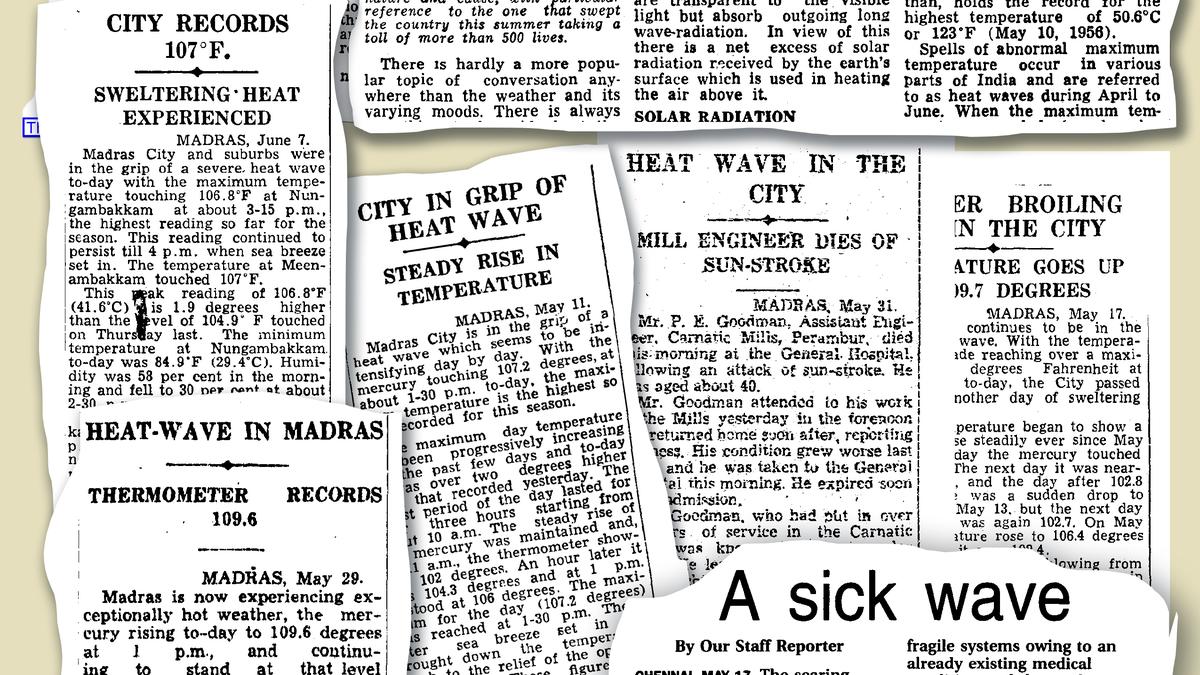
A hot blast from the past, a look at heat wave reports from Madras
The Hindu
Following the death of a 25-year-old construction worker due to a heat stroke, last week in Chennai, a run-through of heat wave reports from Madras lodged in The Hindu Archives
Among the earliest documented heatstroke-related deaths in Madras is the one that was reported by The Hindu on May 31, 1926.
According to the report now lodged in The Hindu Archives, a 22-year-old British soldier Fusilier Bradshaw was playing hockey at St. Thomas Mount when he retired from the game finding “the sun too hot”.
He was first taken to the Military Hospital and then to the General Hospital where he died.
A report titled ‘The heatwave of 1972’ (based on excerpts from a talk given by Dr. A.A. Rama Sastri, Director, Regional Meteorological Centre at the Rotary Club, Madras West) provides an insight into what constitutes a heat wave.
The report explains a heat wave condition is said to be present in a place when the maximum temperature recorded there is 6 to 7 degree Celsius above the usual recoding at that time of year. When it the increase is 8 degree Celsius or more above normal it is categorised as “severe heat wave”. According to the report, June is known to record heat waves and severe heat waves consistently.
There have also been reports of animal death due to heat wave. A 1976 report has it that Madras Snake Park witnessed the death of many snakes, including a rare white cobra, due to a heat wave.
A. Ramachandran, who has brought out a research paper on “Temperature trends in Chennai” says that up to 1965, the behaviour of our atmosphere, terrestrial eco-system and rainfall was all normal.











